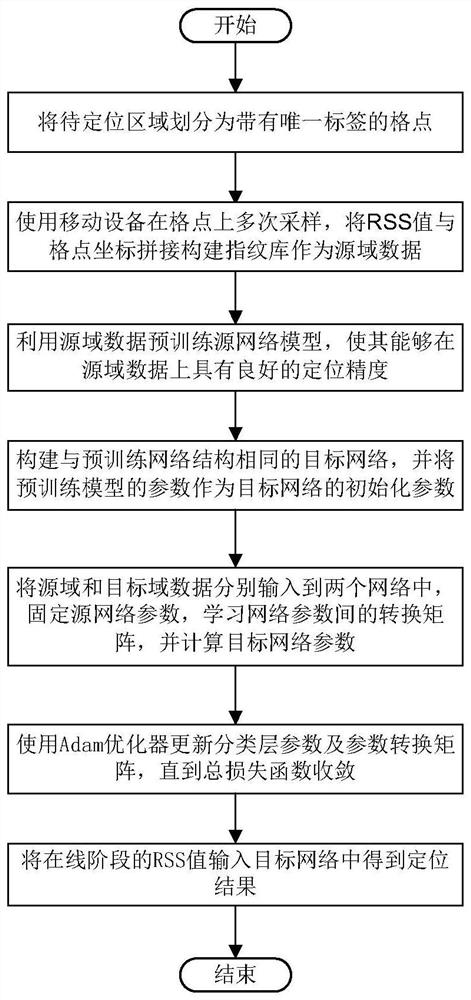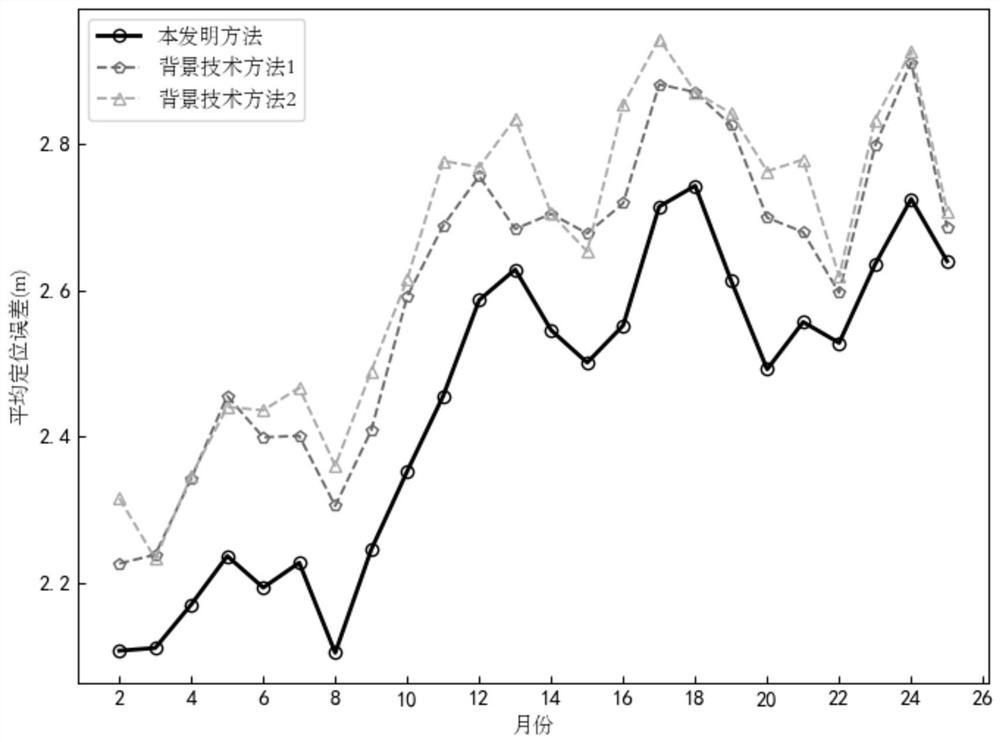A Depth Migration Indoor Localization Method Based on Parameter Prediction
An indoor positioning and parameter technology, applied to services, instruments, computing, etc. based on specific environments, can solve problems such as ignoring unique characteristics, insufficient, model positioning performance degradation, etc., and achieve the effect of retaining processing capacity
- Summary
- Abstract
- Description
- Claims
- Application Information
AI Technical Summary
Problems solved by technology
Method used
Image
Examples
Embodiment
[0081] Experiments were carried out using the WiFi RSS public data set collected in the library of Jaume I University in Spain. The total coverage area of the data collection area is 308.4 square meters, with a total of 620 access points, and the entire area is divided into 48 grid points. Using 8640 labeled samples collected in the first month as source domain data, and 3120 samples collected in the nth month (n≥2) as unlabeled target domain data, the effect of the method of the present invention is verified.
[0082] The deep neural network models involved in the algorithm all contain 5 fully connected layers, and the number of neurons in each layer is 256, 128, 128, 128 and 48 in sequence. The parameters are randomly initialized in the pre-trained source network, and the target network parameters in the parameter prediction stage are initialized to the pre-trained source network parameters.
[0083] The invention verifies the superiority of the proposed algorithm from two...
PUM
 Login to View More
Login to View More Abstract
Description
Claims
Application Information
 Login to View More
Login to View More - R&D Engineer
- R&D Manager
- IP Professional
- Industry Leading Data Capabilities
- Powerful AI technology
- Patent DNA Extraction
Browse by: Latest US Patents, China's latest patents, Technical Efficacy Thesaurus, Application Domain, Technology Topic, Popular Technical Reports.
© 2024 PatSnap. All rights reserved.Legal|Privacy policy|Modern Slavery Act Transparency Statement|Sitemap|About US| Contact US: help@patsnap.com










